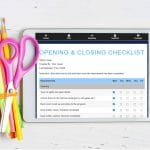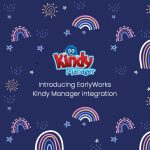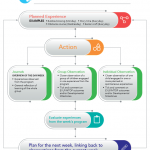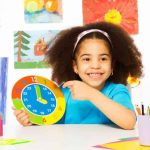Home Program Planning Cycle
In this period of uncertainty brought on by COVID-19, keeping a sense community is probably one of the greatest gifts we can deliver to our children and families. One way of doing this, is to continue to provide Experiences for the children that families can do with them at home. And then keeping the children and families connected by sharing Journals with comments and photos of the children engaging in the same activities, but in different environments.
The good news: this can now all be done through EarlyWorks. And it fits with the EYLF Planning Cycle.
The Home Program also provides services with the ability to meet (or even exceed) the National Quality Standards:
- QA 1 Educational program and practice (every standard and element)
- QA 5 Relationships with children
- 5.1 Relationships between educators and children
- 5.1.1 Positive educator to child interactions
- QA 6 Collaborative Partnerships with families and communities (every standard and element)
Planning Cycle Step-by-Step
Step One (Plan)
- Add a new Program. You might like to call it ‘April Home Activity Program’.
- Add Home Activity Experiences to the April Home Activity Program.
- Make these Experiences visible either only to families of children planned for, or visible to all families.
- Send a push notification to families so they know the Experience has been added.
Step Two (Act and Observe)
- Families do the activities with their child at home.
- Families add comments to the Home Activity. Comments might include observations, feedback, unexpected learning, suggestions for changes…
- Families may attach photos of their child/ren engaged in the activity.
Step Three (Analysis of Learning)
- Educators respond to the family feedback. This provides educators with an opportunity to continue engaging with each child and family on an individual level. This engagement may also include phone conversations, skype, face time. Basically keep the communication strong.
- Create a Journal making the Home Activity the experience observed.
- The feedback from families is included in the Narrative, and the learning observed by families, is included in the Reflection of Learning. Where appropriate, Learning Outcomes can be ticked and commented upon at an individual level.
- Photos shared by the families in their Comments can be added to the Journal, and where appropriate shared. This will help in keeping the community of children and families connected and strong.
- Families can then comment on the Journal. Families might include comments made by their children to be shared with their childcare friends.
- You might like to share some of these comments in a document that is added to the room. This will assist in keeping the sense of community.
Step Four (Reflection)
- Evaluate the Home Activity Experience. Using the feedback from families evaluate how effective the Home Activity was in achieving the intended outcomes. What seemed to work? What didn’t work so well? Were there any unexpected outcomes?
Back to Step One (Plan)
- Using the feedback from families, the photos and any conversations you had with families, plan Family Activities for the next week.
- Link the new Family Activities to the Journals from the previous week, as Preceding Observations.
Recent Posts







